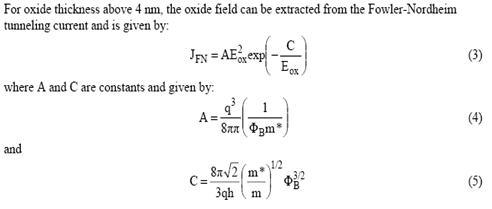Rationale and History of Leap Cad Methods
An “Impossible” Problem
I was given an “impossible” assignment by our Director of R&D. It was a problem that involved the time-dependent-dielectric-breakdown, TDDB, of the SiO2 dielectric in semiconductors. I had no way to methodically approach the problem. What I needed was some methodology to aid in the solution of this problem. The approach I tried was a variant of a structured, general problem solving methodology, GPA, applied to the body of TDDB knowledge.
Model and Expert Mining and Abstraction
I created a list of the 100 most important papers in this particular area of oxide modeling and development. The emphasis was on papers about models, which give an abstraction of the details of physical processes. These papers came from the following publications: the Journal of Applied Physics, Proceedings of the International Reliability Physics Symposium, Sold State Electronics, Journal of Applied Physics Letters, Proceeding of the Electrochemical Society, IEEE Transactions on Electron Devices, and IEEE Transaction on Solid State Circuits. There were also a few sections of books that deal with the particular area of interest. These papers dealt with the engineering and physics of this problem, and in general, were written in the common language of science, mathematics.
Let me share an example of a small snippet from one of the above “expert” papers on TDDB.

As this example shows, the results of the research in this paper are “locked up” either in a pdf file or on the printed page. The above is static, unchangeable, and not easily manipulated. It is not immediately usable to calculate numbers or print graphs. It is not possible to easily re-use the results or re-apply them to a new problem or solution.
I then abstracted the contents of the papers from the bibliography by rewriting the equations and tutorializing the mathematics into a standard math tool, Mathcad.
Mathcad is probably the best tool for capturing, tutorialing, and sharing math. Other tools have other strengths, but Mathcad with its clarity of presentation is best for tutorials.
- It uses the standard, natural, symbolic notation of mathematics for (Calculus) operators. Thus others can read the content without specialized knowledge.
- Equations, text, tables, and graphics are shown explicitly in same worksheet.
- It does automatic unit checking which both save time and reduces errors.
- It explicitly names every function, variable, and vector/matrix length.
- Its functional and symbolic notation matches what is seen in tutorials in text books.
- It thus has clarity of notation and documentation.
- Its features make collaborative development easier.
- Because of its tutorial value, it is being used to write a number of Science and Engineering textbooks.
- It has Enterprise level capabilities for sharing intellectual property.
- Its features facilitate design reuse.
Creation of a Virtual Laboratory
Next, the goal was to abstract the model dynamics into a tutorial, programmable, editable, format that optimized re-usability of the abstracted model. The goal was that the math abstraction would be able to reproduce the graphs, charts, and tables that were the product of the key concepts in the paper. The result should also be extendable to new data, parameters, materials, or situations.
The abstraction into a common framework of the collection of papers provided a virtual laboratory to explore the properties and dynamics of the models. I was able to view, digest, and experiment with a broad range of models.
Application of Known Breakthrough Methodologies
- Once abstracted into this common tutorial framework, it was then possible to apply a multi-disciplined approach and use higher level thinking tools such as the problem solving, and creativity techniques (Delphi, GMA, Lateral Thinking, TRIZ), and higher level abstractions. Within the Virtual Laboratory framework, it was straightforward to compare, contrast, and detect analogies, patterns, exceptions within the models.
- This facilitates the process of lateral thinking and synthesis. The solution to my problems was not obvious, but by using a higher level concept of “Physical Process Factorization,” I was successful in solving this particular “impossible” problem. The solution was not published in a Journal outside of our organization because our management concluded that it gave us a proprietary advantage over our competition.
Today’s Challenge – Application of Knowledge Science to Energy Innovation
Today, we face a number of huge energy challenges, e.g. global supply, oil independence, transfer of wealth. The use of this structured problem solving tool can be applied to the area of energy technology development. The payback in shortening development time of a new technology by a few months, or finding new synergist solutions is huge. We need to use every available tool and option for the energy challenge.
Metcalfe’s Lawstates that the value of a network is proportional to the square of number of subscribers. I estimate that the point of “critical mass” for this tool is about 300 abstracted papers. At this point, the database will be large enough to attract the sufficient attention of researchers that it would be applied to problems and garner enough support and interest for the collaborators to contribute and grow the database. This also would bring more research into additional higher level breakthrough critical analysis tools.
A collaborative network of physical analysis, abstraction, cataloging, and breakthrough strategies.